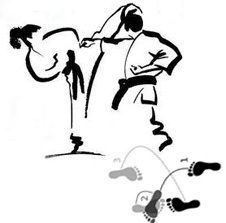

A group that ends up as heavy has failed to make sabaki. Though sabaki does not refer to shape rather, it is a way of playing, it is often used to avoid heavy shape. techniques that are the opposite of clumsy play.skillful process of successfully handling an awkward situation.As such, the exact rendering of sabaki can vary depending on the context and, as a result, has seen broader attempts at defining.īroad definitions of sabaki are more like the following: The local objective may only be a means to a global (larger) strategic objective. For example, the process of sabaki could involve other aims, such as reducing in sente by means of sacrifice(s) or tempting the opponent into a disadvantageous large-scale fight. While sabaki involves making light shapes and occasionally settling groups through shinogi, it doesn't exactly equate to either of these. Therefore, whether it is the course of movement, the speed of movement, the strength of the movement, the required posture, the right musculature to use, the right form of breathing, all these factors include Kihon practice.Broader Renderings of the Concept

You do them without thinking, which frees your mind to be relaxed and experience the dynamics of that moment. Over time, the techniques become unconscious, rather than intentional mechanical movements. Continuous repetition Keiko - 稽古 (with the aim to improve in relation to the Kaizen concept) teaches our body to move automatically, effortlessly and efficiently. Kihon is also practiced as floor exercises, where the same technique or combination is repeated several times and the students move back and forth, Idō - 移動 (‘ movement’), across the floor. It also trains us to stay connected to the floor, emphasizing correct use of the whole body in terms of posture Kamae - 構え, range and movement balance.
1. tai sabaki how to#
It teaches us how to develop an efficient, effective and powerful technique, by harnessing and pulling together the right muscle groups. To become a Karate master, you first and foremost have to learn these techniques and practice frequently.

These come back to punches, kicks and blocks. The Kihon of Karate is elaborated with different stances Dachi - 伎 and techniques, such as arm, hand and foot techniques. To build a strong foundation for our Karate, we need to keep working. They should be studied as a whole: without the Kihon, basic techniques, there can be neither Kata nor Kumite. Together they form one on these three rest all technique, speed, strength and progress in Karate. Mas Oyama stated that one should see Kyokushin Karate as a Martial Arts language that can be learned, in which Kihon are the letters of the alphabet, Kata the words and the sentences, and Kumite form the conversations. As a result Kata - 型, (' shapes' or ' patterns') and Kumite - 組手 (‘ sparring’) no longer needs to be considered about the proper execution of these techniques. By frequent repetition of a technique in the Kihon one acquires a certain automatism. This approach is in line with the Japanese philosophy of Kaizen - 改善, or continuous improvement. Also advanced and masters continue to practice and complete Kihon. A large part of the training for beginners consists of the Warm-up and then Kihon. A lot of attention is therefore paid to the basic techniques and the execution of these techniques in a certain form.

By performing Kihon with the right commitment you also show respect and discipline, both important characteristics for a Karateka. In Mas Oyama's Kyokushin style of Karate, Kihon is an important part of the training.


 0 kommentar(er)
0 kommentar(er)
